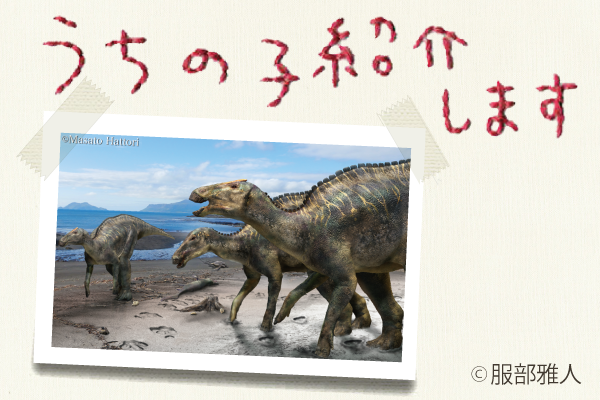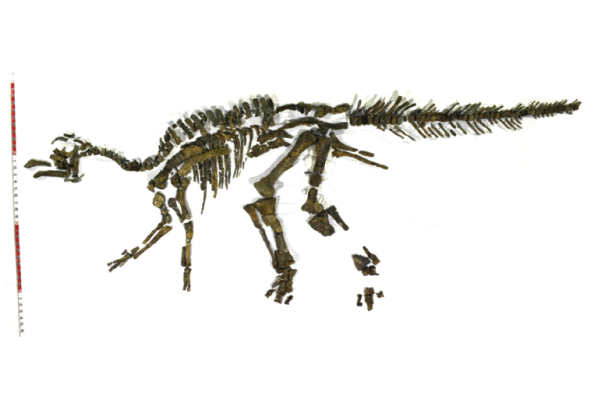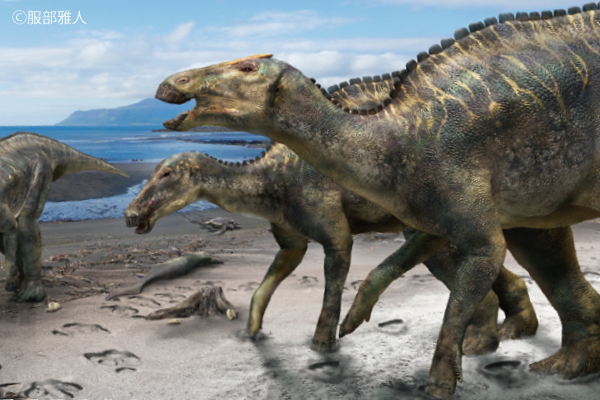- someone
- Information for Middle and High School Researchers
- Research Tips
Introducing Our Child (50): Kamuysaurus Japonicus (Mukawa Ryu), a new species of dinosaur that lived along the coast
2019.12.02
Here we introduce the living creatures that are the subjects of our research. We will write about the interesting and fascinating aspects of these creatures, which we know because we deal with them every day.


This was before the extinction of many life forms and the renewal of ecosystems on Earth. It is believed that large reptiles, the dinosaurs, were the dominant inhabitants of the Earth between 230 million and 66 million years ago. In 2013, there was big news in the field of paleontology, which studies the appearance of extinct organisms based on the little information available. A large dinosaur fossil was found in Hobetsu, Mukawa-cho, Hokkaido, in a stratum of the Cretaceous Period (about 72 million years ago), the heyday of the dinosaurs.
Approximately six years later, in September 2019, the dinosaur fossil, named "Kamuysaurus Japonicus," was officially recognized as a full-body skeleton of a new genus and species of Hadrosauridae. This commonly known "Mukaeosaurus" is estimated to be 8 meters long, 4 to 5.3 tons in weight, and more than 9 years old with a crested scapula. They apparently lived along the coast and evolved independently. Kamuysaurus was found in a stratum called the marine stratum, which is formed when sediments accumulate on the bottom of the ocean. This is very important," said Dr. Kaiji Kobayashi (Hokkaido University Museum), who was the main presenter of this presentation.good(Yours sincerely)Mr. speaks.
A comparison of the bone shapes of 350 bones from about 70 species of hadrosaurids reveals that Kamuysaurus is a member of the Edmontosauridae family of dinosaurs, and that coastal environments were important in the early evolution of the hadrosaur family. Many of the areas where dinosaur fossils are frequently excavated, including England, Canada, and the United States, are terrestrial strata. For example, Hokkaido, Japan is known for its abundance of ammonite fossils. In Japan, there are many marine strata," says Kobayashi. Important discoveries that may reveal the evolutionary process and migration routes of dinosaurs, such as Kamuysaurus, may be found in Japan's unique marine strata in the future.
From the very limited clues of excavated bones, we can scientifically read information and vividly depict the creature's ecology and the period of its inhabitation as if we had seen it in a time machine. This difficult but fascinating research method is the hallmark of paleontology. There may be evidence of prehistoric creatures living right under your feet.
(Text by Yoshitaka Akiyama)
Interview Assistance:Professor, Hokkaido University MuseumKaiji Kobayashi
